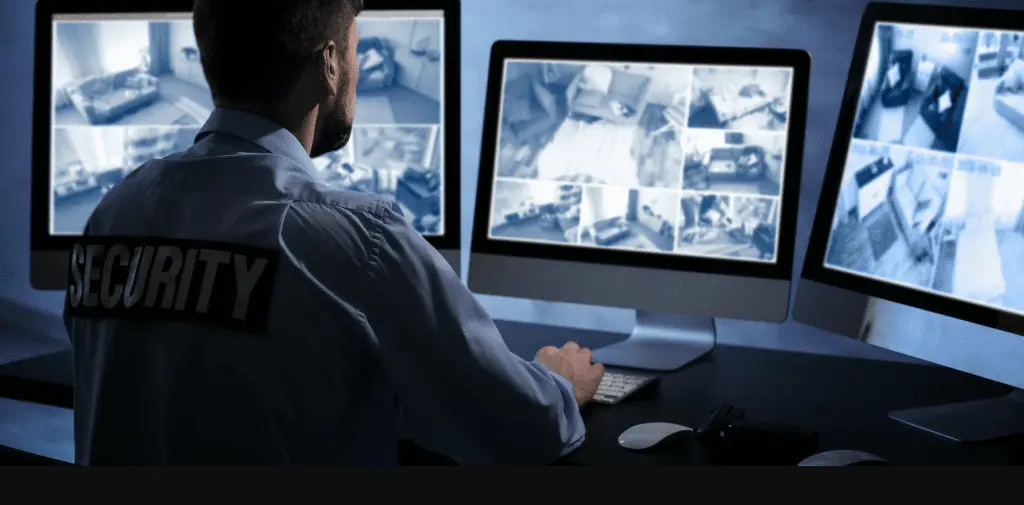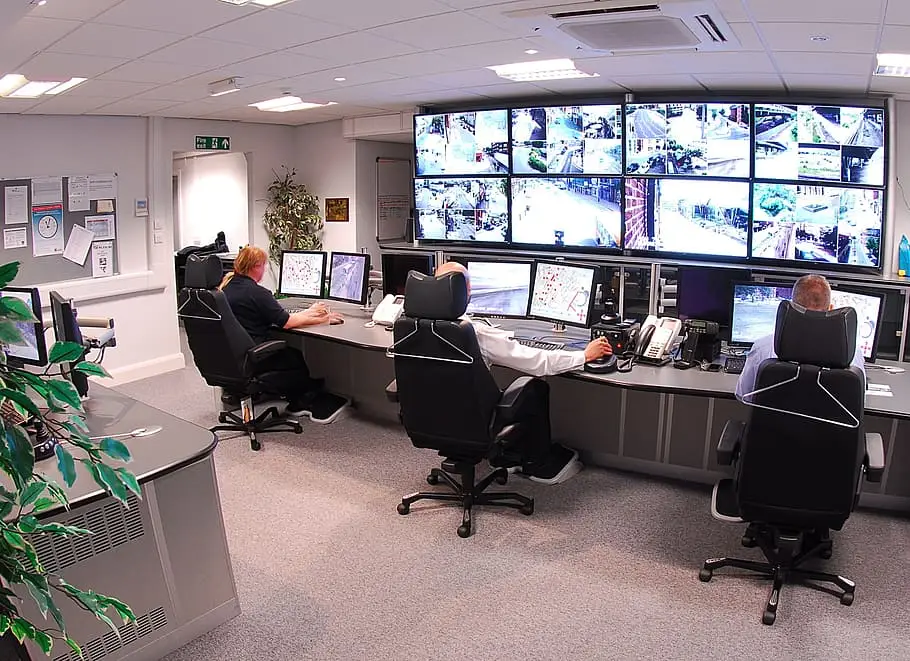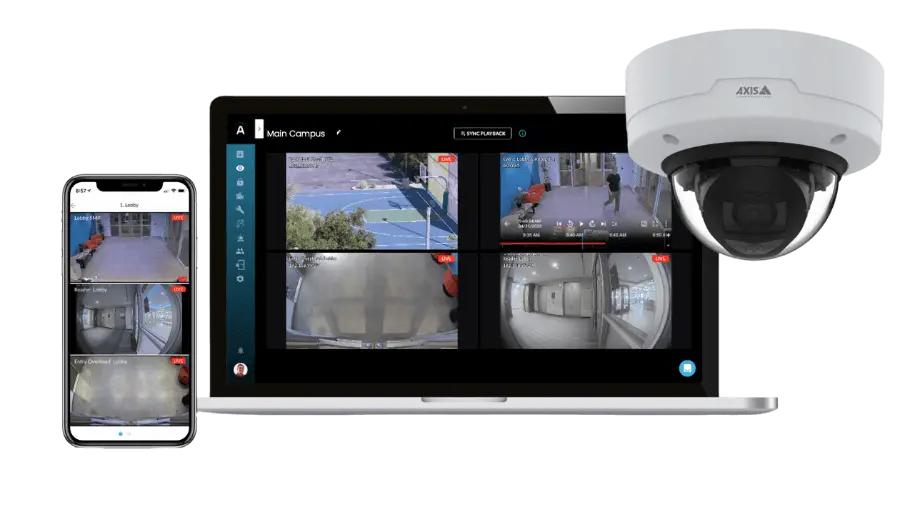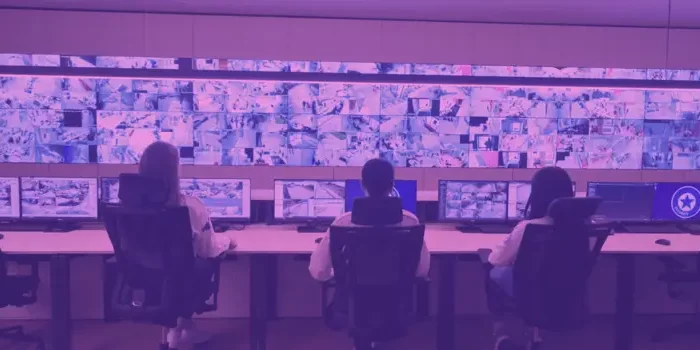In today’s fast-paced and increasingly digital world, businesses are turning to innovative solutions to safeguard their assets, employees, and operations. Remote security monitoring, particularly remote video monitoring, has become a powerful tool for businesses seeking a proactive and cost-effective way to enhance site security. This technology allows real-time surveillance and security management from a distant location, eliminating the limitations of traditional on-site security measures like static guards or passive alarm systems.
What is Remote Security Monitoring?
Remote security monitoring refers to the use of advanced surveillance technology to keep an eye on a site’s activities from a remote location. With the help of high-definition video cameras, sensors, and artificial intelligence (AI), security professionals can monitor various locations 24/7 without needing to be physically present. This real-time monitoring system allows for immediate responses to suspicious activities or potential security breaches, providing a superior alternative to more traditional methods like onsite guards or alarm-triggered recordings.
Remote video monitoring is a significant aspect of remote security monitoring. By combining video cameras and AI-powered software, businesses can prevent crimes before they occur, monitor employee activity, and ensure compliance with safety regulations.
Why Businesses Need Remote Security Monitoring

With an increasing need to protect sensitive data, physical assets, and employees, businesses are looking for reliable and scalable security solutions. Here are some of the key reasons companies are opting for remote security monitoring over traditional security systems:
1. 24/7 Coverage and Real-Time Alerts
One of the most significant advantages of remote video monitoring is that it offers round-the-clock protection. Traditional security systems, such as static cameras or motion detectors, often fail to provide real-time information and can only act after an incident has occurred. In contrast, remote monitoring systems actively observe your premises at all times, ensuring immediate action in case of suspicious activity or an emergency.
Security professionals, often located in secure off-site locations, can immediately assess situations through live video feeds and decide the best course of action, such as triggering alarms, contacting authorities, or warning potential intruders via two-way audio systems.
2. Cost-Effective Compared to Onsite Guards
Employing a team of security guards to monitor your entire facility 24/7 can be costly and inefficient. In contrast, remote security monitoring reduces the need for multiple guards while still providing comprehensive coverage. Cameras can be strategically placed to monitor areas that are typically hard to patrol consistently, giving you complete visibility of your premises at a fraction of the cost.
Additionally, remote video monitoring systems equipped with AI can detect unusual behavior, such as loitering or forced entry, and alert the remote team without any human intervention. This significantly reduces the number of false alarms that can drain resources, improving overall security efficiency.
3. Proactive Prevention Over Reactive Response
Traditional alarm systems typically react to security breaches only after they have occurred. This delay allows criminals to cause damage, steal assets, or endanger employees before action is taken. However, with remote video monitoring, security teams can spot potential threats in real time and take preventive action. For example, if a suspicious individual is loitering outside a facility late at night, remote security operators can warn them via loudspeakers or alert the local authorities before the situation escalates.
The ability to intervene before a crime occurs provides business owners with peace of mind, knowing that their property is being actively monitored and protected by experienced professionals.
4. Enhanced Security for Multiple Locations
For businesses that operate across multiple locations—such as retail chains, warehouses, or construction sites—remote security monitoring offers a centralized solution to oversee all sites from a single location. This scalability allows companies to streamline their security operations and reduce the need for local security teams at each site.
Remote operators can keep track of security cameras across various locations, ensuring that no area goes unmonitored. This is especially useful for construction sites, where theft and vandalism are common concerns. By having multiple cameras monitor the site, security teams can respond quickly to any suspicious activities and minimize losses.
Key Components of a Remote Security Monitoring System
Remote video surveillance systems consist of several key components that work together to ensure comprehensive security coverage. These include:
- Video Cameras: High-definition cameras are placed strategically to cover essential areas such as entry points, parking lots, and critical assets.
- AI and Analytics: Artificial intelligence plays a crucial role in modern remote security monitoring systems. AI can analyze live video feeds to detect unusual behavior or unauthorized access and alert security operators instantly.
- Real-Time Monitoring: Trained professionals remotely observe the live video feeds to respond quickly to potential security threats.
- Two-Way Communication: Many systems include two-way audio functionality, allowing security operators to communicate with individuals on-site and warn trespassers or provide instructions.
- Cloud-Based Storage: Recorded footage is stored securely in the cloud, making it easily accessible for future reference or investigations.
Applications of Remote Security Monitoring

The versatility of remote video monitoring makes it suitable for various industries and applications. Here are some examples:
- Retail Stores: Monitoring customer behavior, preventing shoplifting, and ensuring staff follow company protocols.
- Construction Sites: Preventing theft and vandalism of valuable equipment or materials on-site.
- Warehouses: Ensuring inventory is secure and monitoring the movement of goods.
- Corporate Offices: Keeping track of employee activity and ensuring compliance with safety standards.
- Industrial Sites: Enhancing site security and monitoring operational safety in hazardous environments.
The Future of Remote Security Monitoring

As technology continues to evolve, so too will the capabilities of remote security monitoring systems. Integration with AI, machine learning, and advanced analytics will make monitoring systems more intelligent, allowing for predictive security measures rather than reactive responses.
Moreover, advancements in cloud technology and mobile applications will make it easier for business owners and security professionals to access real-time footage from any device, ensuring total control over site security from anywhere in the world.
For businesses seeking a reliable, proactive, and cost-effective way to protect their assets, remote security monitoring provides a comprehensive solution. From real-time surveillance to AI-powered threat detection, remote video monitoring offers superior protection over traditional methods while reducing costs and improving site safety. As the technology continues to advance, its role in ensuring the security of businesses will only grow stronger.
Arcules offers a cloud-based video surveillance solution that integrates AI and real-time monitoring to ensure your business benefits from cutting-edge security. With Arcules, you can remotely monitor multiple locations, receive real-time alerts, and prevent potential threats before they happen. Our scalable platform reduces the need for costly on-site guards while improving overall security through advanced analytics and proactive prevention. Make your security smarter and more efficient with Arcules’ comprehensive remote security monitoring solutions.
Ready to improve your security? Schedule your free consultation today and see how Arcules can transform your security strategy!
